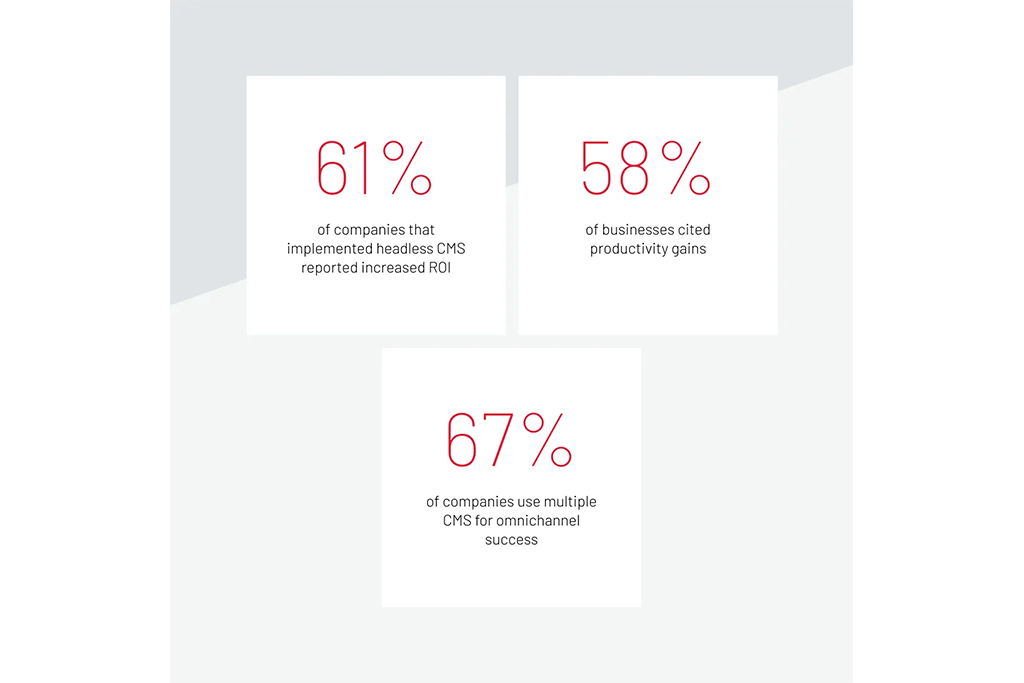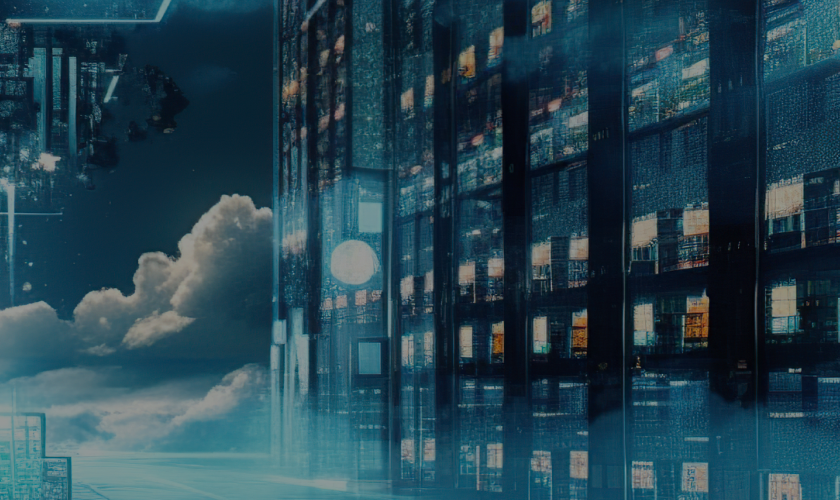Headless vs. Traditional CMS: Which One to Choose?

Follow the trends or choose something reliable and proven? We love such questions, as we can answer “It depends…” and start a 3-hour marathon of explaining all the pros and cons.
The headless vs. non-headless CMS battle falls right into this situation. Especially when the choice is complicated by the rapid growth of the content management software market to $28.00 billion by 2029, which means plenty of CMS options with their capabilities and prices.
This article is aimed to simplify your decision a little, going over the main differences between traditional CMS vs. headless CMS. Here we’ll outline the strengths and weaknesses of both options and define which system is more suitable for your needs.
Quick Tips for Busy People
If you’re short on time but need a clear breakdown, this is the section for you. Here we’ll go through the basic concepts of headless vs. traditional CMS.
- Traditional CMS: a monolithic system with integrated front-end and back-end, offering customizable templates and themes to suit the needs of businesses of all sizes.
- Headless CMS: separates the back-end (content repository) from the front-end, allowing multichannel content delivery and customized front-end experiences.
- Key differences: traditional CMS is easier to set up and use, while headless CMS offers greater scalability and customization for complex projects.
- When to choose: opt for traditional CMS for quick deployment and minimal technical expertise. Go with headless CMS for scalability, multi-channel support, and tailored front-end designs.
By exploring the pros and cons, and taking an in-depth look at the difference between headless and monolithic CMSs, you’ll be ready to make the right choice for your project.
Traditional CMS: Benefits and Limitations
Traditional CMS is still the way to go, with WordPress at the helm and a 43.6% share of all the websites. At its core, a traditional CMS packages content management and front-end presentation in one, offering simplicity of use and accessibility to the non-technical user. It has predefined themes, plugins, and templates that can quickly change the design of a webpage. Perfect for any size of team, it minimizes costs in development and simplifies workflows.
While appealing, the pitfalls of a traditional CMS arise when you need more than built-in components and features. Any customization requires development skills and potentially extensive resources if the system is tight or specific. This includes API and data source integrations, which may be limited or even impossible due to the inherent restrictions of traditional CMS platforms.
Another limitation is inflexibility regarding multi-platform delivery, as traditional CMSs support only web display, requiring specific systems for managing content on mobile apps and other devices.
Scaling traditional CMSs to handle traffic growth is another challenge. While they are well-suited for smaller projects, such as blogs or corporate websites, they struggle to meet the demands of high-traffic platforms, such as ecommerce sites or media outlets. As traffic scales to thousands of connections per minute, the costs associated with maintaining performance and reliability can become prohibitively high.
Headless CMS: Benefits and Limitations
The latest findings show that more than 99% of the companies that have implemented headless CMS report improvements, with 61% realizing increased ROI and 58% citing productivity gains. Its flexibility also drives 67% of businesses to use multiple CMS for omnichannel success.

As you can see, the adoption of headless CMS with platforms like Contentful and Strapi is accelerating because of the demand for multi-channel content delivery. The idea behind a headless CMS explained simply is that it separates the content repository from the presentation layer, enabling companies to deliver and manage experiences seamlessly across websites, mobile apps, IoT devices, and more.
This architecture gives flexibility, allowing developers to create custom front-ends for specific user experiences while keeping content management centralized. For example, Expert Soft helped a financial data provider adopt Contentful CMS, which empowered internal teams to manage content with ease, increasing efficiency.
When talking about challenges, we should mention higher initial costs, mainly because a headless CMS requires skilled specialists for the setup. As a headless CMS doesn’t include a predefined front-end, developers need to define all components, integrating the front-end. However, after the initial setup, the system has the same workflow for non-technical users as a traditional CMS, providing streamlined content management.
Headless vs. Traditional CMS: Detailed Comparison
While both systems manage content effectively, they cater to different needs. Here’s a difference between CMS and headless CMS.
| Feature | Traditional CMS | Headless CMS |
| Architecture | Monolithic (tightly coupled front and back-end) | Decoupled (separate front and back-end) |
| Ease of use | User-friendly, minimal technical knowledge needed | Requires set up by developers, user-friendly afterward |
| Customization | Limited to predefined templates and plugins | Fully customizable front-end designs |
| Multi-channel support | Basic, limited to web content | Advanced, enables management of web and mobile apps, IoT, and more |
| Scalability | Scalability is limited by monolithic structure | Scalable because of the decoupled nature |
| Setup time | Fast setup with templates and plugins | Needs extensive initial configuration |
| Cost | Lower upfront cost, but higher costs of further customizations | Higher cost for setup and integration |
Headless vs. Serverless CMS
While headless CMS is one of the pioneering tools in changing the way of managing content, it’s not the only evolution of CMS. Today, another type is gaining traction: serverless CMS.
Both headless and serverless CMS have the same objective: to make content management easier, but in different ways. Unlike headless CMS, which focuses on decoupling the back-end from the front-end, serverless CMS eliminates the need to manage servers altogether. This architecture provides a “plug-and-play” solution where hosting, scaling, and maintenance are handled by the platform itself.
If headless CMS is all about flexibility, serverless CMS is more about operational simplicity.
However, while serverless CMS simplifies deployment, it may lack the deep customization capabilities offered by headless CMS, making it more suitable for projects where operational simplicity takes precedence over tailored solutions.
Now that we’ve spoken about the ins and outs of each system, and compared various CMS types, the quite logical question is: “Which system to choose among this variety?” Let’s tackle this challenge.
Which System to Choose?
There’s not much creativity here, so we can give the very obvious answer: the decision between headless CMS and traditional CMS depends on your exact needs and goals. As both systems have their strengths, which of them is the right one depends on a combination of factors you should consider before making a decision.
-
Managing multi-channel content
If your business needs a seamless delivery of content on the web, mobile, and even IoT, headless CMS provides unbeatable flexibility with its API-first approach. Traditional CMS, while effective for single-channel projects, can become weighed down by this complexity.
-
Streamlining content updates
Legacy content management processes can be quite outdated or cumbersome, hence slowing down your team. Headless CMS allows updating and changing in real time across platforms, whereas updating larger scales with traditional CMS takes more effort.
-
Launching new features quickly
Headless CMS is a flexible solution for innovation and iterations of new features when old technologies are in the way. Its decoupled architecture allows development teams to work independently on front-end and back-end updates, thus accelerating timelines.
-
Budget considerations
Traditional CMS is cost-effective for simpler projects, with lower setup costs and ready-to-use features. However, a headless CMS, while requiring a higher initial investment, including developer expertise, delivers long-term value for businesses planning to scale and innovate.
-
Future scalability
Traditional CMS may handle stable, single-channel operations but usually struggles with multi-platform growth. Headless CMS excels in scalability, empowering businesses to adapt to future needs, as Expert Soft has shown in projects involving dynamic and omnichannel environments.
Takeaway
Traditional CMS would be sufficient for most straightforward projects with limited requirements, where speed of deployment and user-friendliness are key considerations.
Headless CMS is a better fit for the enterprise that seeks to scale, deliver content across all touchpoints, and adapt to ever-changing customer needs. Infracting a higher up-front investment of finances and also specialized technical expertise in their setup, it’s suited for businesses focused on long-term growth and innovation.
Advice for Headless CMS Implementation
Implementing headless CMS can change how you manage and deliver content, but it needs to be well planned. Here are some practical tips to ensure a smooth and successful transition to a headless CMS.
-
Start gradual migration
Transition components one at a time, managing risks and integration without disruption of operations or overwhelming your team.
-
Plan for content previews
Set up preview endpoints in your front-end so that editors can view content in its intended layout before publishing.
-
Enable feature flags for experimental features
Gradually roll out changes using feature flags, especially for new integrations or APIs. Separate the experimental content models from production versions to reduce the risk of disruption.
-
Ensure robust role-based access control (RBAC)
Limit API keys and tokens and set specific scopes, such as read-only for publicly exposed APIs. Enforce granular permissions to prevent accidental changes and security issues.
-
Focus on performance
Optimize API configurations for a faster, more efficient delivery of content with a better user experience across platforms.
-
Leverage expertise
Collaborate with experts, like Expert Soft, to make the implementation process smooth and get the best results.
To Sum Up
When choosing between a traditional or headless CMS, at stake is not only simplifying content management at a lower cost but also the ability to adapt to future needs. Whether you’re aiming for simplicity or scalability, understanding your unique needs is the first step toward success.
If you’re ready to unlock the future of content management with a headless CMS, we can help turn your vision into reality. Reach out to Expert Soft for tailored solutions that will set you up for seamless operations in 2025 and beyond.

Kate Savastsiuk, Head of Digital Transformation and Customer Experience at Expert Soft, has extensive experience guiding businesses through CMS transitions. Her hands-on expertise with headless architectures provides valuable insights into comparing headless and traditional CMS approaches.
New articles

See more

See more

See more

See more

See more
